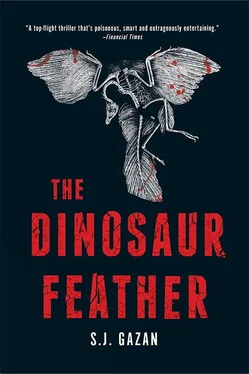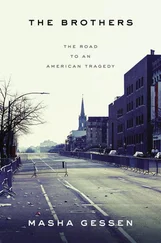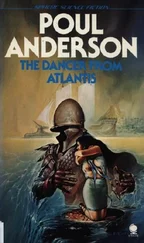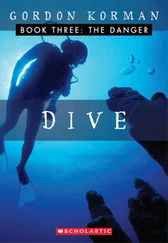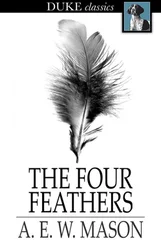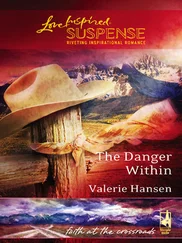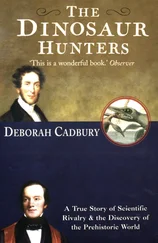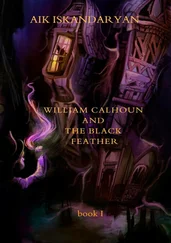Freeman’s book was a masterpiece. It was filled with wonderful color photographs and illustrations, and throughout the text he argued seriously and soberly. He backed up his views with well-argued scientific conclusions, made references to existing literature, and allowed for doubt to remain where certain points had yet to be decided. Had it not been for Helland, and especially Tybjerg’s ardent assertion that Freeman was wrong, Anna would have bought Freeman’s sister-group theory on the spot. Freeman was without a doubt someone who knew what he was talking about, and this was the man she was supposed to “wipe the floor” with? When she had finished reading The Birds she had eighty-two pages of handwritten notes and hadn’t grown even a bit wiser; rather, she had become truly terrified of the task that lay ahead of her. With The Birds in her arms and her heart pounding, she decided to come clean with Dr. Tybjerg.
Dr. Tybjerg was waiting for her in the cafeteria at the Natural History Museum, and Anna didn’t even have time to sit down in the chair opposite him before her misgivings poured out of her.
“Dr. Tybjerg, I fail to see why Professor Freeman’s scientific position is wrong… I think his argument sounds convincing.”
Dr. Tybjerg pursed his lips.
“Well, then you haven’t read enough,” he said with zen-like calm.
“It’s taken me three weeks to read The Birds ,” Anna groaned.
“Why on earth did you read all of it? You can flip through it. That’s more than enough for anyone.” Dr. Tybjerg took the book from her.
“This book is a flash in the pan, nothing more.” He quickly thumbed the pages. Then he smiled. “But I do understand why it can seem a little overwhelming. Freeman appears convincing because he has convinced himself. Such people are always the worst.” Dr. Tybjerg paused and then looked as if he had come up with a plan.
“Drop the book,” he ordered her. “Instead, read at least fifteen papers written by people who argue that birds are present-day dinosaurs, and fifteen papers by people who disagree. This will make everything clear to you. And stay away from books for the time being. Many of them are good and you can return to them later, but this one,” Dr. Tybjerg slammed The Birds on the table, “is nothing but whorey propaganda.”
Anna exhaled through her nostrils.
“And one final thing,” he added, giving her a short, sharp look. “You need to assume I’m right. You’ll be convinced in time, but until that happens you need to accept my position. Otherwise you’ll quite simply lose your way.”
Dr. Tybjerg’s face told her the meeting was over. Anna nodded.
Anna spent the next three days searching the database for published papers at the University Library for Natural Science and Health Studies in Nørre Allé. She kept reminding herself Tybjerg was right.
The first day was an exercise in futility. There were tons of papers for and against, but she didn’t come across anything that convinced her that Helland and Tybjerg’s argument was more valid than Freeman’s. It wasn’t until day two that things improved. She had compiled over forty papers at that point, she had photocopied them and spread them out on the table in front of her, and she was just about to give into frustration again when a tiny flicker of light appeared in the darkness.
If Tybjerg was right, if it really were the case that the kinship of birds to dinosaurs was as well supported as Tybjerg and Helland and… she did a quick count… around twenty-five other vertebratists from all over the world agreed it was, then it had to follow that their scientific position was the stronger, at least for now, as Dr. Tybjerg maintained. If that were true, well, then it was indeed remarkable that reputable journals such as Nature , Science, and, in particular, Science Today , which owed their existence to their scientific credibility, continued to assign column inches to it. Anna still was not convinced that this was the case, but that seemed secondary now. The situation would have been different if a sliver of doubt remained. If birds might have been dinosaurs, if fossilized evidence had yet to be discovered, which Anna could see had been the case in the 1970s and 1980s, if the feathered Sinosauropteryx hadn’t been found in 2000 or the feathered Tyrannosaurus in 2005. But there was plenty of fossil evidence. The feathered dinosaur was a reality, and it was clear in every single paper that argued in favor of the close kinship between birds and dinosaurs that the authors were convinced birds were dinosaurs. Utterly convinced.
Anna stared into space.
Dr. Tybjerg had told her that the editorial committee of a scientific journal typically consisted of five people with a science background, which, broadly speaking, meant that fifteen people from the three leading journals, Nature , Science, and Science Today , were in supreme command of which scientific topics would reach the public. Fifteen people. That’s not many, Anna thought, and in order to avoid giving preferential treatment to certain subjects or areas of research, those fifteen people had to consider very carefully if what they published did, in fact, reflect the actual work being carried out across the world. And this was where things didn’t add up. Even though experts agreed that birds were present-day dinosaurs, Anna found in every other journal, at least, new contributions to the debate. She could feel the excitement pump through her body. Quick as lightning she sorted the papers into two piles, then she highlighted the names of the authors in yellow, and when that was done, she leaned back and smiled. There were twenty-four full-length papers and minor contributions in the pile that supported the kinship of birds to dinosaurs; there were twenty-three contributions in the pile that didn’t believe that birds were present-day dinosaurs. Together, Dr. Tybjerg and Professor Helland accounted for five of the articles in the one pile; the remaining nineteen had been written by sixteen other vertebratists from universities all over the world. It was a rather convincing spread.
Then she went through the pile with twenty-three papers. These were written by three different authors. Clive Freeman, Michael Kramer, and Xian Chien Lu. Clive Freeman and Michael Kramer were responsible for nineteen out of the twenty-three articles. Anna got up and found a computer with Internet access. First she looked up Xian Chien Lu and discovered that the Chinese paleontologist had died the previous year. That left only Clive Freeman and Michael Kramer. It took Anna eight clicks to learn that Michael Kramer had completed his graduate degree at the department of Bird Evolution, Paleobiology, and Systematics at the University of British Columbia in March 1993, been awarded a PhD grant in 1993 by the same department, and had written his thesis there from 1997–2000, after which he had been employed as a junior professor in June 2000. Anna’s eyes scanned his résumé and soon found what she was looking for: his MSc and his PhD supervisor was Professor Clive Freeman, his internal PhD examiner was Professor Clive Freeman, and the Senior Professor at the department of Bird Evolution, Paleobiology, and Systematics was Clive Freeman. For the first time since Anna had started her graduate work, she felt she had made a breakthrough.
Anna had just taken off her jacket, shaken thoughts of Lily’s upsetting meltdown at the nursery school from her mind, and switched on her computer when she pricked up her ears. She knew every sound in the department. The groaning extraction system, the shrill smoke alarms, the Monday, Tuesday, and Thursday noises of students conducting experiments, the sound of Helland’s busy footsteps, of Johannes’s snail’s pace shuffle, of Svend Jørgensen and Elisabeth Ewald, the other two professors in the department, who wore soft rubber soles and clicking heels, respectively. However, the sound Anna was now hearing didn’t fit in. Someone was running, then they stopped, and she heard Johannes call out for Professor Ewald in a half-strangled voice followed by the sound of running feet again, and then Professor Ewald’s voice and then Professor Jørgensen’s. Frowning, Anna rolled back her chair and stuck her head out into the corridor. Johannes was standing in front of Professor Jørgensen’s lab, his arms flailing.
Читать дальше
